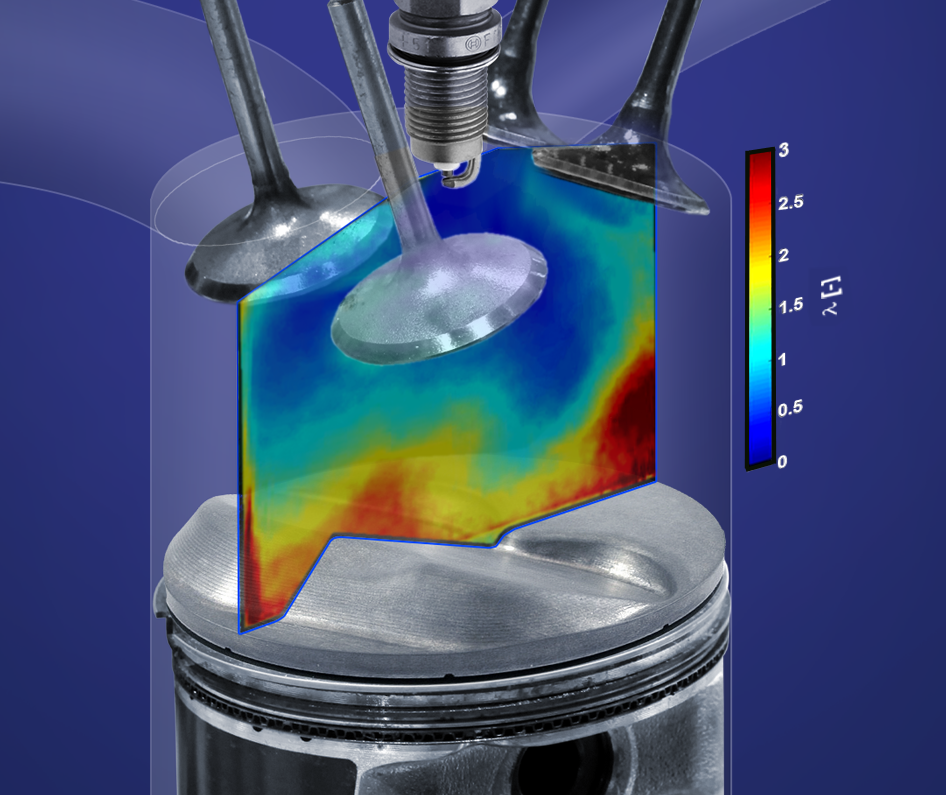Optical measurement technique for natural-gas engines
Monday, 25. September 2017
As a fuel for modern spark ignition engines natural gas has a high potential for CO2 reduction with low nitrogen oxide (NOX) and without soot emission. For mobile applications natural gas is fueled as “Compressed Natural Gas (CNG)”. Existing CNG engines are not using the full potential of this fuel, like higher anti-knock rating than gasoline and thermal efficiency comparable to Diesel engines. Finding the optimal CNG/air mixture formation is the significant challenge to achieve this.
The German Federal Ministry of Education and Research founded the project „OMeGa-E - Optische Messung der Gemischbildung am Erdgasmotor“ (Optical measurement of mixture formation in a natural gas engine). Cooperation partners in this project are Volkswagen as user of this technology, the Institute for Combustion and Gas Dynamics of University Duisburg-Essen for imaging systems, the Laser-Laboratorium Göttingen e.V. responsible for sensor technology, and LaVision as the specialist provider for optical measurement systems.
Optical sensors and laser diagnostics for optimal mixture formation
Within the project two different types of measurement techniques were developed and tested at engine test beds under operating conditions. They provide sophisticated optical measurement tools for engine developers to optimize natural-gas engines.
The LaVision ICOS-System was improved to determine methane and CNG concentration. By using an easy applicable spark plug probe the local gas fraction of CNG is measured continuously with high time resolution. This offers crank angle resolved analysis of the mixture formation and the local air/fuel ratio.

Temporal evolution of the air/fuel-ratio at the spark plug with injection of methane and CNG, respectively.
Additionally a laser light sheet imaging method for 2D views of the air/fuel ratio distribution was developed. CNG visualization is achieved by adding a fluorescent gas tracer. Unwanted scattered light inside the combustion chamber was efficiently reduced by the innovative SLIPI-method to obtain quantified Lambda- and gas temperature values.

2D-distribution of the air/fuel ratio inside the combustion chamber during mixture formation of methane and air.
The essential step in the project was to improve both systems to be able to measure local gas temperature, because of the temperature dependency of the CNG concentration evaluation. With both techniques, separately or together, the mixture and homogenization of CNG with intake air is tracked. These measurements help to improve computer simulations and to understand highly complex processes of modern engines over a wide dynamic range.

